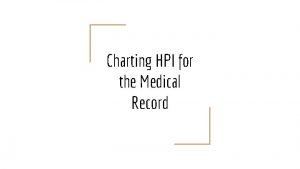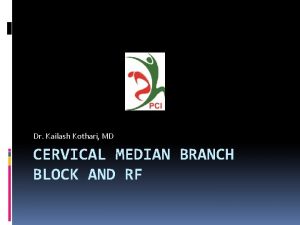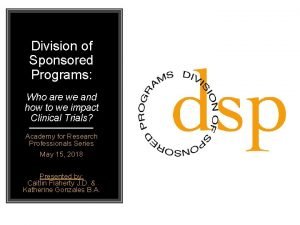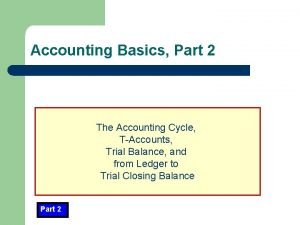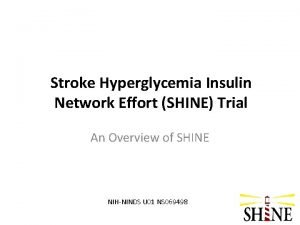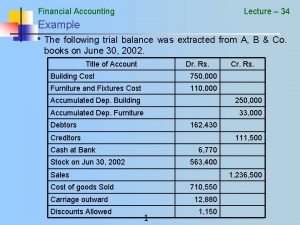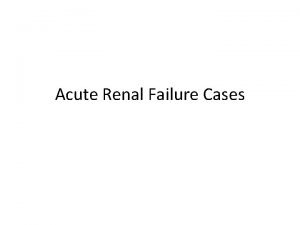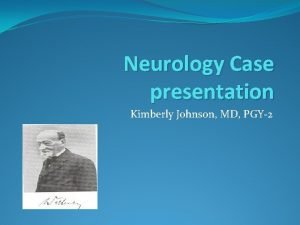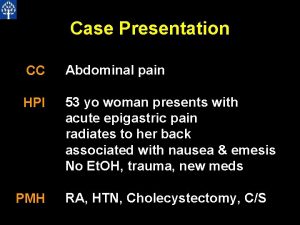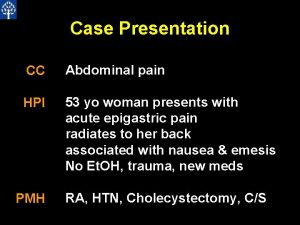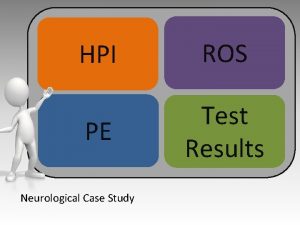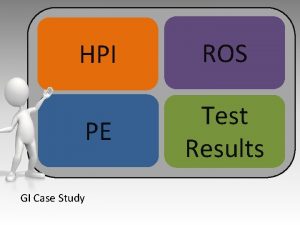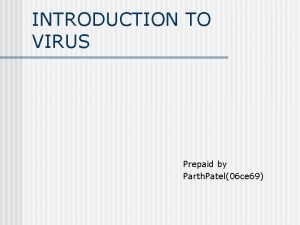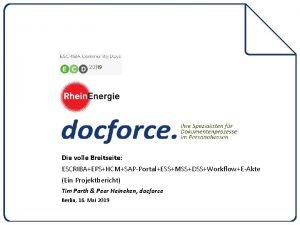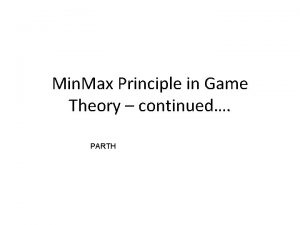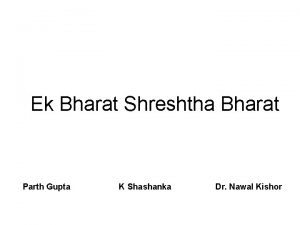STOPAH Trial Parth Kothari MS 3 Case HPI




































- Slides: 36

STOPAH Trial Parth Kothari, MS 3

Case • HPI: MB is a 49 year old male with PMH of alcohol dependence disorder, hypertension, diabetes, and CKD stage 3 who presents with 3 days of abdominal pain, altered mental status and his family noticed skin has changed color over the last week.

Case • Vitals: – HR: 95, BP: 140/95, 96% O 2 Sat, Temp: 40. 0 C • PE: – HEENT: Scleral icterus – Abdomen: TTP in RUQ • Labs: – CBC WBC: 28 – PT: 18 (from baseline of 13) – LFTs Tbili: 20, Direct: 15; AST: 450, ALT: 235 – Hepatitis panel negative, blood cultures negative, UA/UC negative

Alcoholic Hepatitis • Inflammation of the liver from prolonged, heavy use of alcohol • In severe cases, 30 -day mortality exceeds 30% • Prednisolone and pentoxifylline have both been studied for the treatment of severe alcoholic hepatitis, but no clear recommendation exists

Pathogenesis • TNF and several TNF-inducible cytokines, such as interleukin (IL)– 1, IL-6, and IL-8

Classification of AH Severity • Maddrey's Discriminant Function is useful in predicting short-term prognosis but is less useful for long-term prognosis • Discriminant function = 4. 6*(increase in PT from baseline)(seconds) + Bilirubin (mg/dl) • Severe AH when > 32

Prednisolone Trials • 2008 Cochrane meta-analysis on use of glucocorticoids in AH showed no conclusive results – However, subgroup analysis of trials with patients discriminant score > 32 showed a statistically significant reduction in mortality in patients treated with steroids, particularly in patients with severe AH – Reduction in mortality from 34% to 20%

Results

Pentoxyphylline Trials • High plasma levels of TNF-alpha have been found in patients with AH • Pentoxyphylline is an inhibitor of TNA-alpha synthesis • Largest trial in 2000 from USC, studying use of pentoxyphylline for severe AH; N=102 – Inclusion – severe AH, excluded patients with active infection, GI bleed, or severe CV disease – Endpoints – Overall mortality and progression to hepatorenal syndrome

USC Trial Results • Decrease in overall mortality from 46. 1% to 26. 5% • Also thought to prevent hepatorenal syndrome, decrease from 34. 6% to 8. 2%

Head to Head Trials • Several small studies have compared glucocorticoids with pentoxifylline, but the results have been inconsistent • Plagued by small sample sizes which do not provide enough power to detect effect reliably

PICO • In patients with acute alcoholic hepatitis, does the use of predisolone or pentoxifylline versus placebo improve short term and medium term mortality?


Design • Multicenter, randomized, double-blind trial in the UK with N=1, 103 – Web-based system used to randomize patients – Patients were stratified based on geographic location and risk category • High risk patients defined by history of GI bleed, sepsis, or renal impairment prior to randomization • All other patients categorized as intermediate risk • 2 -by-2 factorial design – 40 mg prednisolone daily – 400 mg pentoxyphylline TID

Factorial Design No Pentoxyphylline No Prednisolone Placebo Pentoxyphylline Prednisolone + Pentoxyphylline

Power Calculation n = [(Zα/2 + Zβ)2 × {(p 1 (1 -p 1) + (p 2 (1 -p 2))}]/(p 1 p 2)2 – n = sample size required in each group, – p 1 = proportion of subject cured by Drug A – p 2 = proportion of subject cured by Placebo – p 1 -p 2 = clinically significant difference – Zα/2: This depends on level of significance, for 5% this is 1. 96 – Zβ: This depends on power, for 80% this is 0. 84

Power Calculation • Calculation showed that 513 patients receiving each agent and an equal number not receiving each agent would be required to detect a reduction in 28 -day mortality from 30% to 21% • Allowing for a 10% dropout rate, the study aimed to enroll 1, 200 patients with 600 in each group

Inclusion & Exclusion Criteria • • • Inclusion Clinical diagnosis of AH Age > 18 years 80 g/day alcohol use in men & 60 g/day for women Bilirubin > 4. 7 mg/dl Discriminant function of 32 or higher • • • Exclusion Jaundice > 3 months Cessation of alcohol consumption for more than 2 months prior to entry into the trial Other concurrent causes of liver disease AST > 500, ALT > 300 Previous participation in this study Renal failure (>5. 7 mg per deciliter) or dialysis Active GI bleeding Untreated sepsis Requirement of pressors such as epinephrine or norepinephrine, unless condition stabilized with 7 days in hospital

Endpoints • Primary: 28 -day mortality • Secondary: 90 -day and 12 -month mortality or liver transplantation

Consort Diagram



Table 1 • The authors state that the groups were well-matched

Table 2

Table 3

Table 2 vs. Table 3 • Odds ratios come from multivariate logistic regression • Table 2 shows results from prespecified analysis which only adjusted for risk category in general • Table 3 shows results after adjusting for factors affecting mortality from univariate analysis – Age, encephalopathy, white-cell count, prothrombin ratio, and serum levels of bilirubin, creatinine, urea

Multivariate Logistic Regression • Done with backwards elimination with p=0. 05

Figure 2

Figure 2

Figure 2

Table 4

Adverse Events • SAEs reported in 42% of patients, with equal distribution across treatment groups – 20% of all serious adverse events resulted in death • Infection occurred in 13% of patients who received prednisolone vs. 7% who did not receive prednisolone (P =0. 002)

Internal Validity • Patients randomized appropriately with doubleblinding – Table 1 characteristics are well matched • Clinical diagnosis vs. liver biopsy diagnosis • Patients lost to follow up or unable to be analyzed for other reasons • Trial was ended early for financial reasons – 33 patients not included in the 90 -day or 12 -month analyses – 159 patients not be included in 12 -month analysis

External Validity • Revisit key exclusion criteria – – – – – Jaundice > 3 months Cessation of alcohol consumption for more than 2 months prior to entry into the trial Other concurrent causes of liver disease AST > 500, ALT > 300 Previous participation in this study Renal failure (>5. 7 mg per deciliter) or dialysis Active GI bleeding Untreated sepsis Requirement of pressors such as epinephrine or norepinephrine, unless condition stabilized with 7 days in hospital • Study population was > 60% male, > 90% white • Took place in the UK – Differences in health system? – Other factors that we are unaware of?

Discussion • Lower rate of mortality than other trials? (~16% at 28 -days) – Though STOPAH used similar inclusion/exclusion criteria as previous trials, patients enrolled were younger with lower rates of encephalopathy – Shows the trial may not have been powered adequately • Need to weigh 28 -day mortality benefit in prednisolone group with increased risk of infection – 2011 trial by Nguyen et. al. in NEJM showed improved survival at 1 month in patients with prednisolone + n-acetyl cysteine vs. prednisolone alone • Patients’ relapse & amount of alcohol consumption after discharge not controlled for – Directly affects 90 -day and 12 -month mortality rates – Only 37% of patients stayed abstinent at 1 year (self-reported)

Our Patient • 49 year old male with PMH of alcohol dependence disorder, hypertension, diabetes, and CKD stage 3 who presents with severe AH • What would you treat with? • What recommendations do you have for him? – Abstinence is the only factor associated with longterm survival in these patients
 Best worst and average case
Best worst and average case Hpi ros pmhx pe plan
Hpi ros pmhx pe plan Sejarah perkembangan hukum perdata internasional
Sejarah perkembangan hukum perdata internasional Pemakaian hukum asing dalam hpi
Pemakaian hukum asing dalam hpi Cc chief complaint
Cc chief complaint Locates hpi
Locates hpi Perbedaan icrc dan ifrc
Perbedaan icrc dan ifrc Renvoi dalam hpi
Renvoi dalam hpi Penyelundupan hukum hpi
Penyelundupan hukum hpi Hpi elements cheat sheet
Hpi elements cheat sheet Pluretic
Pluretic Concordantie beginsel
Concordantie beginsel Bushco hpi
Bushco hpi Hpi pmh
Hpi pmh Hpi example
Hpi example Pasal 163 is
Pasal 163 is Topgunauditschool.com
Topgunauditschool.com Contoh kasus single renvoi
Contoh kasus single renvoi Dr kailash kothari
Dr kailash kothari Nisarg kothari
Nisarg kothari Conclusion of indian education commission (1964-66)
Conclusion of indian education commission (1964-66) Conclusion of kothari commission
Conclusion of kothari commission Objectives
Objectives Financial education conference
Financial education conference Bubble sort algorithm pseudocode
Bubble sort algorithm pseudocode Bubble sort best case and worst case
Bubble sort best case and worst case Short case vs long case
Short case vs long case Hershey's erp failure
Hershey's erp failure Cases of law of sines
Cases of law of sines Binary search complexity
Binary search complexity Bubble sort best case and worst case
Bubble sort best case and worst case Case western reserve university case school of engineering
Case western reserve university case school of engineering Ui division of sponsored programs
Ui division of sponsored programs Savings trial fund
Savings trial fund Trial balance junior cert
Trial balance junior cert Shine trial
Shine trial Trial balance
Trial balance














